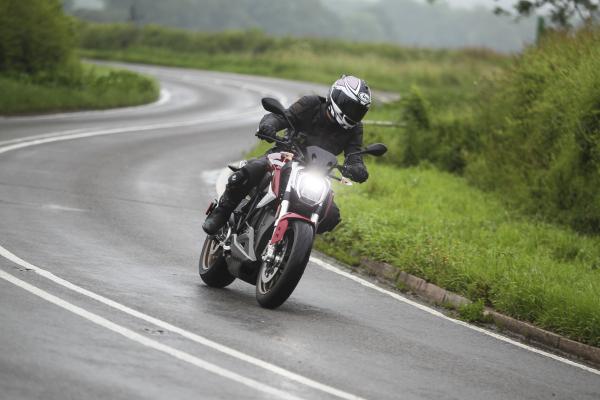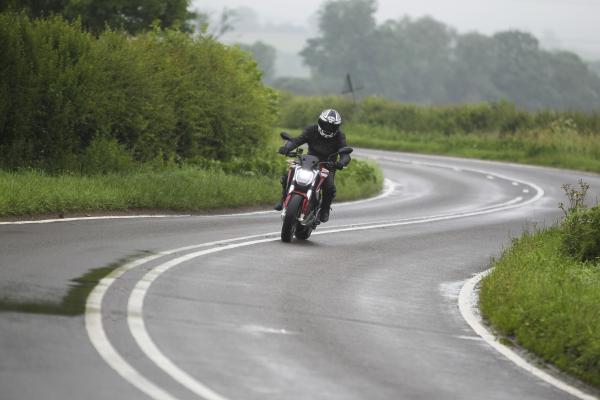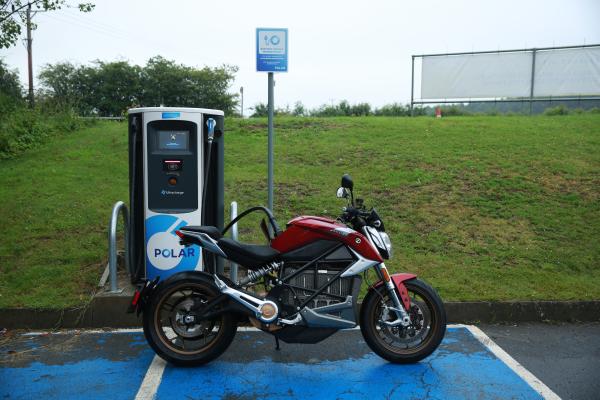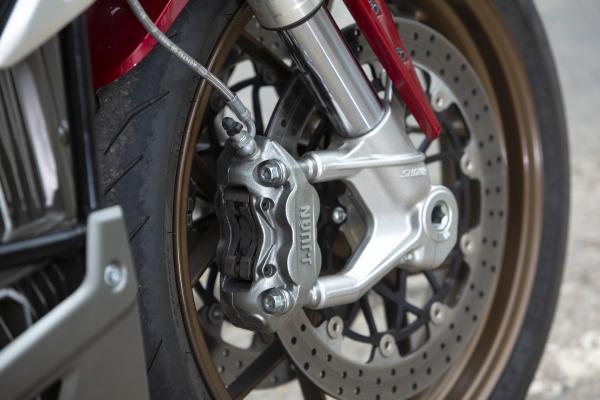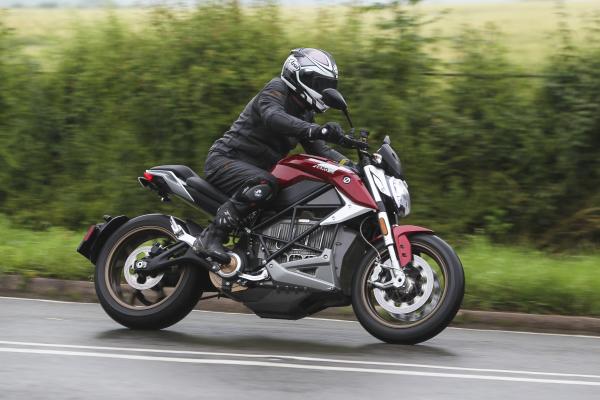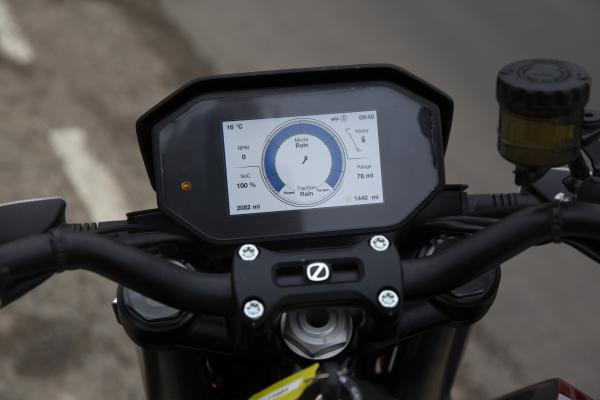Zero SR/F (2019) Review and video road test on UK roads
Visordown was on hand to test the latest electric bike from Zero motorcycles, the SR/F

Member for
54 years 8 monthsYOU only have to look at the rate of development in the electric bike race at the Isle of Man TT called to TT Zero to see how fast electric motorcycles are developing. The first event took place in 2010 with Mark Miller winning at a speed of 96.820mph. Fast forward to 2019 and the electric bikes are hitting 120mph laps, it took petrol-powered bikes a decade to appreciate those kinds of gains.
And while we’re talking of leaps forward, lets talk a little about Zero’s new SR/F. To me, it looks like the electric bike that’s designed to steal sales from the petrol-powered masses. It’s got good range and recharge times (if fast chargers and range-extending tanks are used), phenomenal power and torque figures and a styling package that wouldn’t look out of place on a Ducati or MV Agusta’s stand at the motorcycle show.
Motor and Battery
Powering the SR/F is Zero’s inhouse built Z-Force (pronounced Zee-force obviously!) ZF75-10 motor. It’s a pretty looking bit of kit to look at – all anodised aluminium and chunky looking cooling fins – and it can bite too, with 110bhp (82kW) of power and 140lb-ft of torque on tap. Controlling the flow of electrons is easy with a throttle response that has all the feel and resistance of a convention cable operated item.
Making overtakes great again
Out on the road the bike will hurtle you at the horizon with breath-taking efficiency, and with no gears to shift, or clutch to worry about, the surge is totally unlike that of any internal combustion engine (ICE), it really has to be ridden to be appreciated. That said, all the hype around huge torque numbers and quotes like “you’ve got it all from zero rpm” might make you expect it to wrench your arms off at 70mph on the motorway – it won’t, as the revs rise, torques tails off – but it’ll still dispatch overtakes in the blink of an eye.
Range and recharging
Providing you with the power is a repackaged version of Zero’s own Lithium-Ion (Li-ion) battery that holds 14.4kWh of energy. A standard charge from flat to 80% (which is Zero’s optimum charge amount) is 4.5 hours for a Standard bike and 2.5 hours on the Premium, thanks to its quick charge facility. Zero quote a range of 160-miles in the city, or 123-miles combined – given how much electricity we used on the 50-mile UK launch ride, I’d think about 100-miles would be a more accurate maximum.
Handling
As with the TT bikes I mention at the top of the page, the Zero SR/F is a big step forward in the handling and braking department when compared to the SR range it is superseding, and it’s not like they were bad bikes to start with.
You have decent spec adjustable Showa suspension up front and a Showa 40mm shock at the rear. While the ride quality is good the level of dive under braking is a little unnerving, although you could dial out some of that with a twiddle of the fork adjusters. If I’m being overly critical, the bike does feel a little out of its comfort zone when really pushed hard, with mid-corner bumps and undulations upsetting the apple cart. But is this really a bike to go apex hunting, or just a cool looking roadster for a quick weekend blast?!
J-Juan is a name you probably haven’t heard of but they’ve been around for years making OEM brakes and parts for Ducati, Triumph, KTM, Yamaha and Honda – the chances are you’ve used their kit without knowing it!
The experience gained shows well in the Zero SR/F, with what feels like a high spec braking system with loads of bite from the first millimetre of the lever moving, bags of feel and loads of power to haul up the 220kg machine with two-finger ease. The ABS system is supplied by Bosch and is safe and smooth in its operation with cornering ABS included.
Zero SR/F price | Standard or Premium?
The Standard Zero SR/F starts at £16,490 once the government grant of £1500 has been considered. The Standard is still a premium product in terms of power output and performance parts, it’s the charging system that differs, with this bike coming with a 3kW internal battery charger.
The Premium Zero SR/F comes in at £18,490 including the government kickback and comes with a 6kW charger built-in, meaning a standard charge at home will take roughly half the time of the Standard Zero SR/F.
We like
- An electric bike that actually looks good
- Handling (within its limits)
- Brilliant brakes
We don’t like:
- No engine noise around town can cause problems
- Range when hammered
- Fast recharge times come at a price!
Verdict
For the petrolheads out there currently (geddit???) frothing at the mouth and punching the keyboard in disgust while shouting 'bring back two-strokes' – move along, this isn’t the motorcycle you are looking for.
Right – for the rest of you level-headed folk out there this is the biggest jump Zero have made to in electric motorcycling. It’s fast, fun and stylish enough to make people look twice. Is it the best looking electric bike out there? In my mind no it’s not as pretty as the Energica Ego, which in my mind is a much sportier proposition with better handling and brakes if B-road scratching is in order. but then again it might be easier to live with than the Italian built machine.
So, the big question – is it ready to take the space of the petrol-powered bike that’s sat in your garage? Yes, but only if a few caveats are met. If you don’t tour, do trackdays and don’t travel more than 50-miles to work – then yes, with a couple of compromises and changes to your routine – the Zero SR/F could be the perfect bike for you.
If you want it to stop, go, handle and refuel like a petrol-powered machine – I’m sorry we aren’t quite there… yet.
Zero SR/F specs
New price | £16,490 Standard - £18,490 as tested |
Motor | Z-Force 75-10 enhanced thermal efficiency, passively air-cooled, interior permanent magnet AC motor |
Peak power | 110bhp (82kW) @ 5,000rpm (54bhp/40kW sustained) |
Torque | 140 lb-ft (190Nm) |
Top speed (sustained) | 120mph |
Transmission | Direct drive through belt |
Range | Circa 100 miles |
Rider aids | ABS and traction control |
Frame | Steel trellis |
Front suspension | 43mm Showa Big Piston Separate Function forks |
Front suspension adjustment | Preload, compression and rebound |
Rear suspension | Showa single shock with remote reservoir |
Rear suspension adjustment | Preload, compression and rebound |
Front brake | 2x 320mm floating discs, J-Juan radially-mounted four-piston monobloc calipers and radial master-cylinder |
Rear brake | 240mm disc, J-Juan sliding single-piston caliper |
Front tyre | 120/70-17 Pirelli Diablo Rosso III |
Rear tyre | 180/55/17 Pirelli Diablo Rosso III |
Rake/Trail | 24.5°/94mm |
Wheelbase | 1,450mm |
Seat height | 787mm |
Kerb weight | 220kg (Standard), 226kg (Premium, as tested) |
Warranty | Unlimited miles / 2 years on bike, 5 years on battery |
Website |
